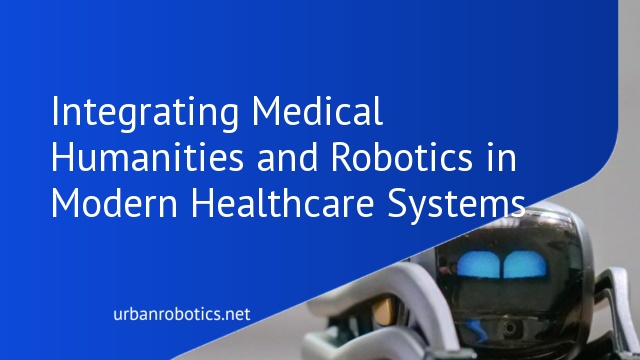Understanding Medical Humanities
Medical humanities blend medical knowledge with the humanities to enhance healthcare practice. This interdisciplinary approach enriches both the understanding and the delivery of medical care.
Definition and Scope
Medical humanities encompass disciplines like literature, philosophy, ethics, history, and arts as they relate to medicine. This field explores the human experience of health and illness by incorporating these diverse perspectives. By doing so, it aims to provide a more comprehensive understanding of patient care, addressing both the scientific and emotional aspects of healthcare.
Importance in Healthcare
Medical humanities play a crucial role in healthcare by fostering empathy, ethical reasoning, and patient-centered care. Professionals can become better caregivers by understanding patients’ stories and experiences. This interdisciplinary approach also helps in addressing moral dilemmas and improving communication skills, creating a supportive and understanding healthcare environment.
Integration of Robotics in Healthcare Systems
Robotics transforms healthcare systems by streamlining processes and enhancing patient care. This technology-driven approach aligns with the principles of medical humanities, fostering a balanced healthcare environment.
Current Technologies
Robotic technologies currently encompass surgical robots, rehabilitation devices, and robotic nurses. Surgical robots, like the da Vinci Surgical System, enable precise, minimally invasive procedures. Rehabilitation robots assist patients in recovering mobility and strength. Robotic nurses, such as those developed by SoftBank Robotics, provide support in patient monitoring and medication delivery. These innovations optimize medical tasks, improving efficiency and outcomes.
Applications and Benefits
Robotics in healthcare offers numerous applications and benefits. Automated systems reduce the workload of healthcare professionals and decrease human error rates. In surgery, robots increase accuracy in complex procedures, minimizing recovery times. Rehabilitation robots tailor therapy to individual needs, fostering faster patient recovery. Robotic nurses handle routine tasks, freeing nurses for more critical patient interactions. These advancements enhance overall healthcare quality and patient experience.
Bridging Medical Humanities and Robotics
Integrating medical humanities with robotics in healthcare transforms patient care by combining technology and compassionate practices.
Ethical Considerations
Ethical issues arise as robotic systems become more prevalent in healthcare. Patient consent and data privacy are critical to maintaining trust. Ensuring that robots operate within ethical boundaries and do not replace human judgment is essential to preserving the integrity of medical decisions. We need clear guidelines and ongoing ethical reviews to navigate these challenges.
Human-Robot Interaction
Human-robot interaction focuses on how patients and healthcare professionals engage with robotic devices. Effective communication between humans and robots improves outcomes, enhancing the therapy experience and acceptance rates. Designing user-friendly interfaces and intuitive controls can mitigate anxiety in patients, making robotic assistance a valuable component of healthcare delivery.
Enhancing Patient Care
Robotics enhances patient care by providing precision, reducing recovery times, and enabling personalized treatment. Surgical robots improve accuracy, while robotic nurses support medical staff in routine tasks. These advancements allow healthcare professionals to devote more time and energy to critical care and patient interaction, fostering a more humane healthcare environment.
Case Studies
Examining real-world examples highlights how robotics combined with medical humanities can transform healthcare systems.
Successful Implementations
Several hospitals have successfully integrated robotic systems. For example, Stanford Hospital’s use of surgical robots has improved precision in complex procedures. Similarly, the Cleveland Clinic’s deployment of robotic nurses has streamlined patient care, reducing response times for patient needs. These implementations demonstrate enhanced efficiency and improved patient outcomes, validating the synergy between robotics and medical humanities.
Lessons Learned
Adopting robotics in healthcare yields valuable insights. One lesson is the importance of comprehensive staff training to maximize the benefits of new technologies. Another is ensuring patient-centric approaches by involving patients in the design and implementation process, as noted in Mayo Clinic’s feedback integration model. These lessons underscore the need to balance technological advancement with humanistic care.
Challenges and Future Directions
Combining medical humanities with robotics in healthcare presents several challenges and opportunities. We examine both technical and ethical issues and future prospects.
Technical and Ethical Issues
Robotics in healthcare faces technical and ethical hurdles. Challenges include system integration, ensuring seamless interoperability between robotic systems and existing healthcare infrastructure. Ethical issues, like maintaining patient privacy and informed consent, remain significant. Ensuring robots act within ethical guidelines is vital to gaining patient trust and safeguarding sensitive information. Addressing these issues requires ongoing research and development, with a focus on transparency and accountability.
Future Prospects
Future prospects for integrating robotics with medical humanities show promise. Advances in artificial intelligence (AI) and machine learning can enhance robotic capabilities, improving patient care quality. Potential exists for personalized medicine, where robots tailor treatments based on individual patient data. Expanding interdisciplinary collaboration will drive innovation, leading to better patient outcomes. As we navigate these challenges, combining humanistic care and advanced technology can transform the healthcare landscape for the better.
Conclusion
Balancing technological advancements with humanistic care is essential for revolutionizing healthcare. As we integrate robotics into our systems, the focus must remain on ethical considerations and patient privacy. The future holds promise with AI and machine learning paving the way for personalized medicine. By fostering interdisciplinary collaboration, we can ensure that both technology and the medical humanities work hand in hand to enhance patient care quality.





